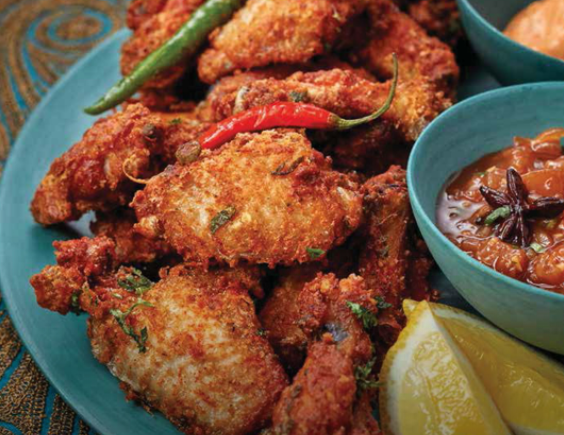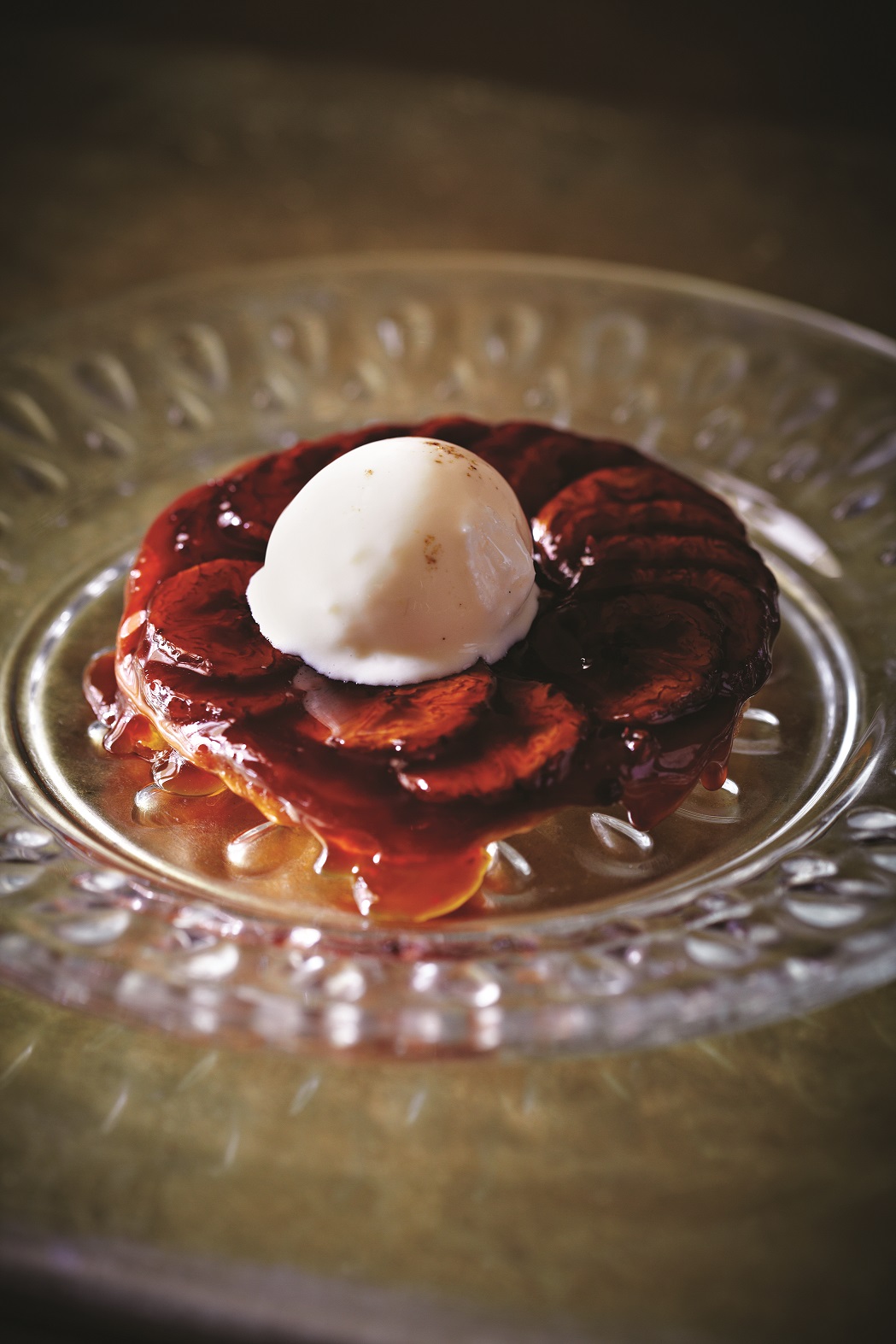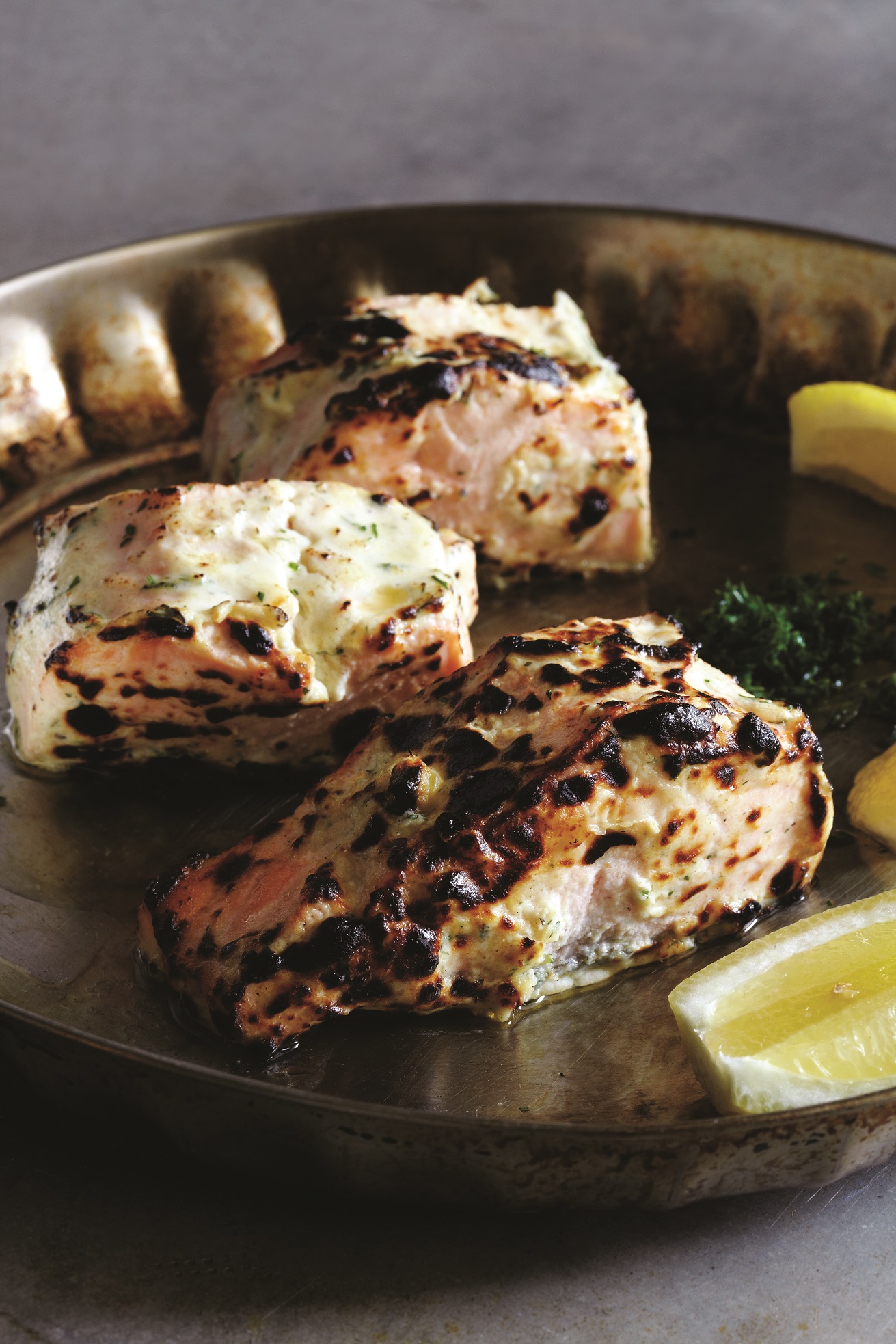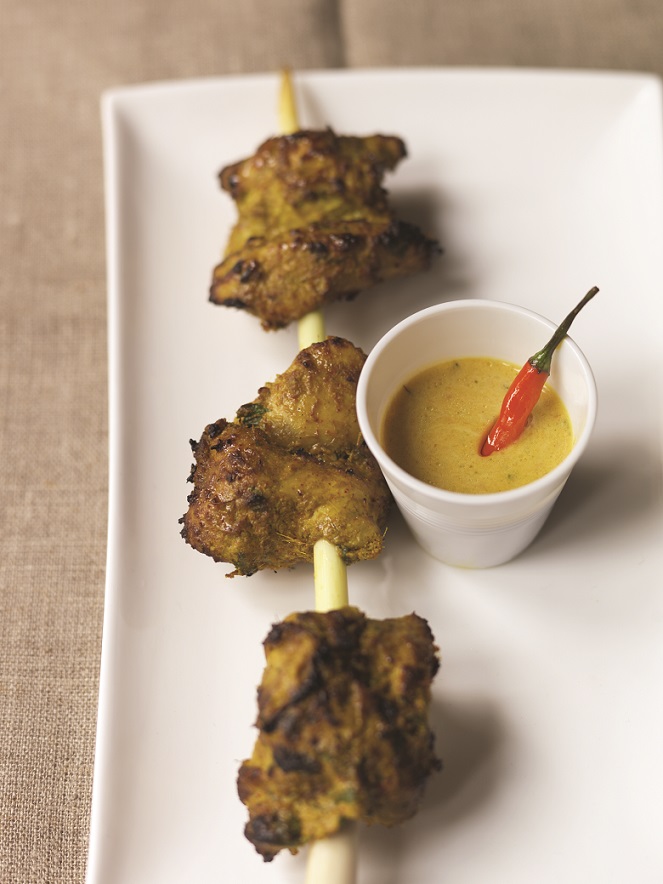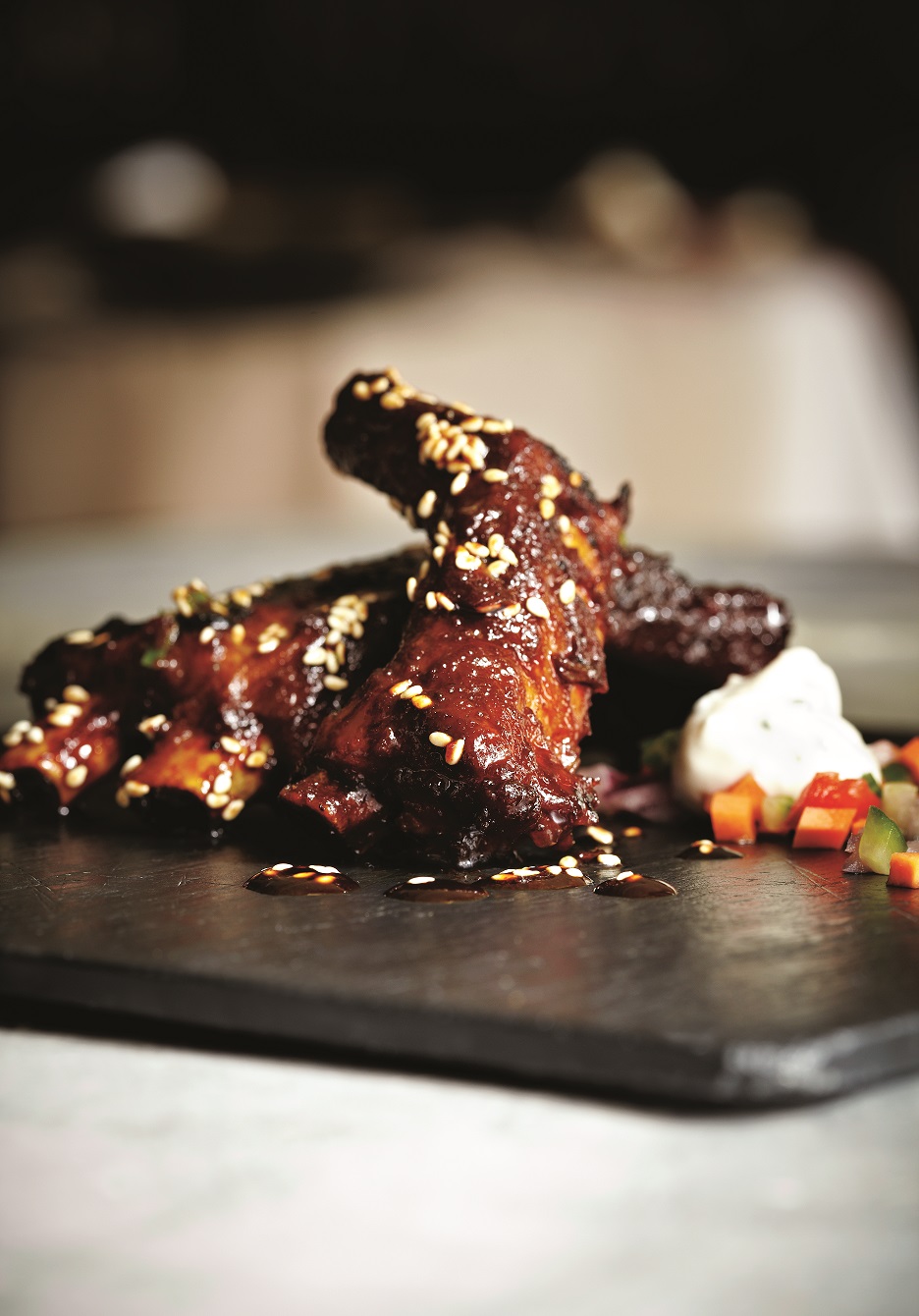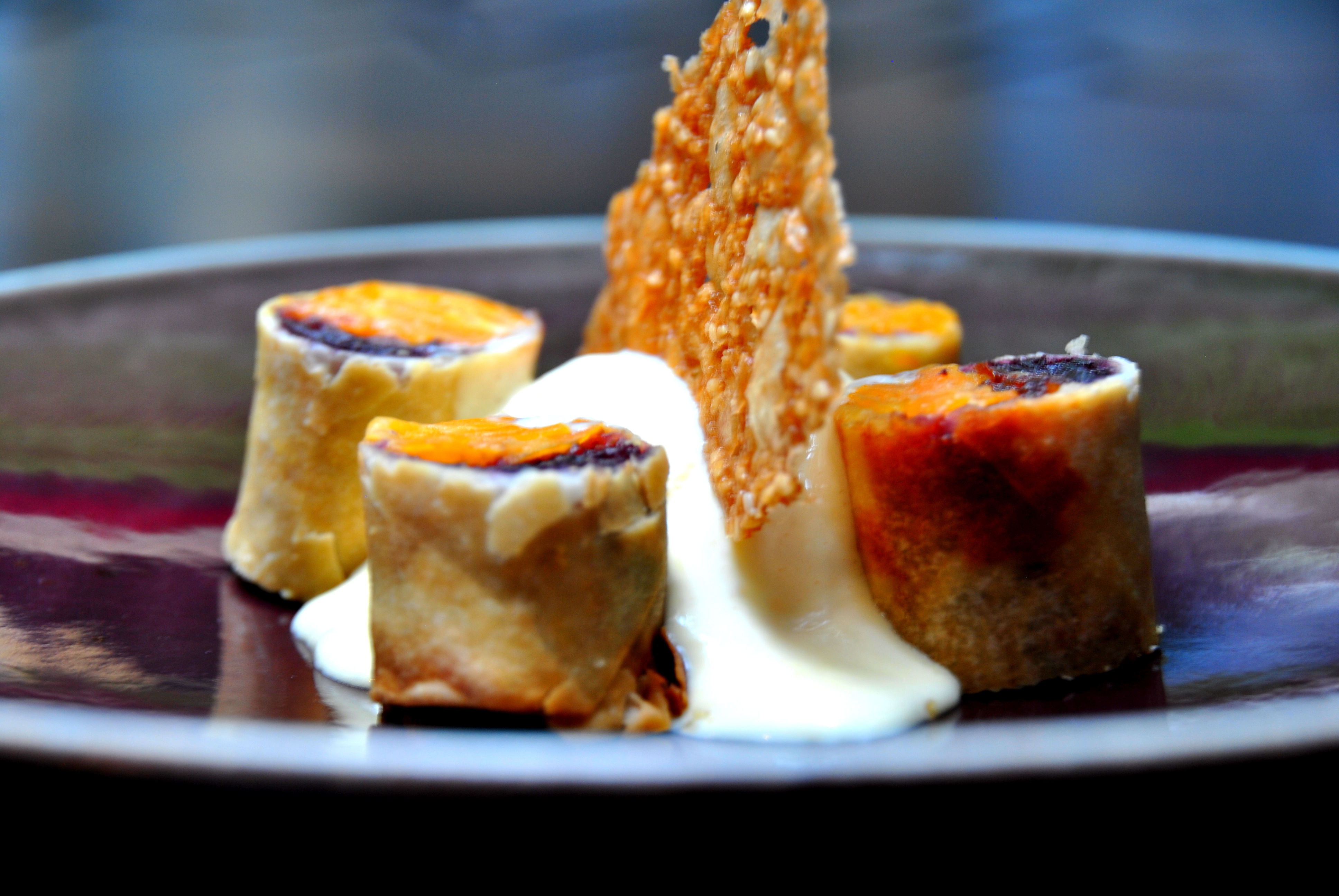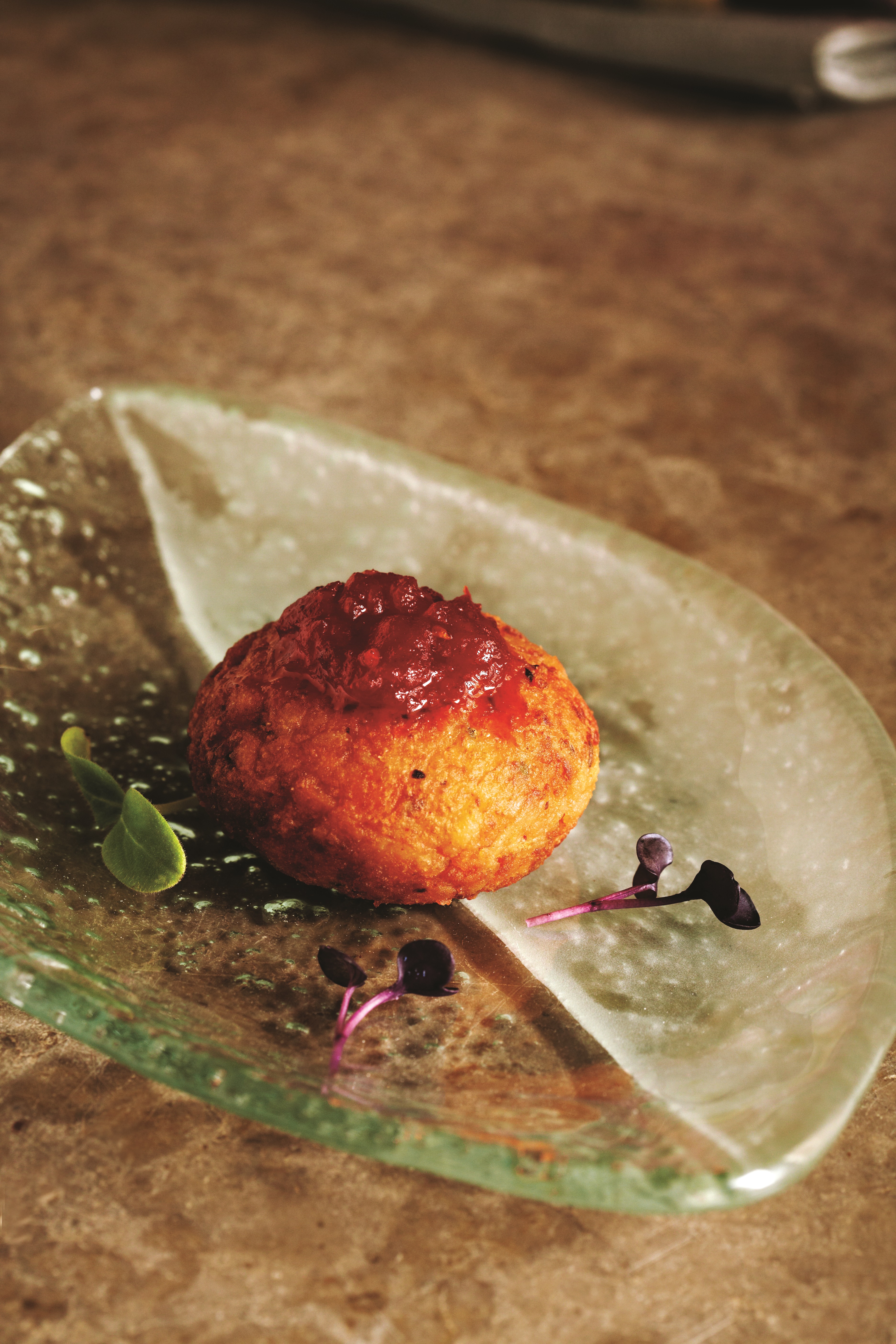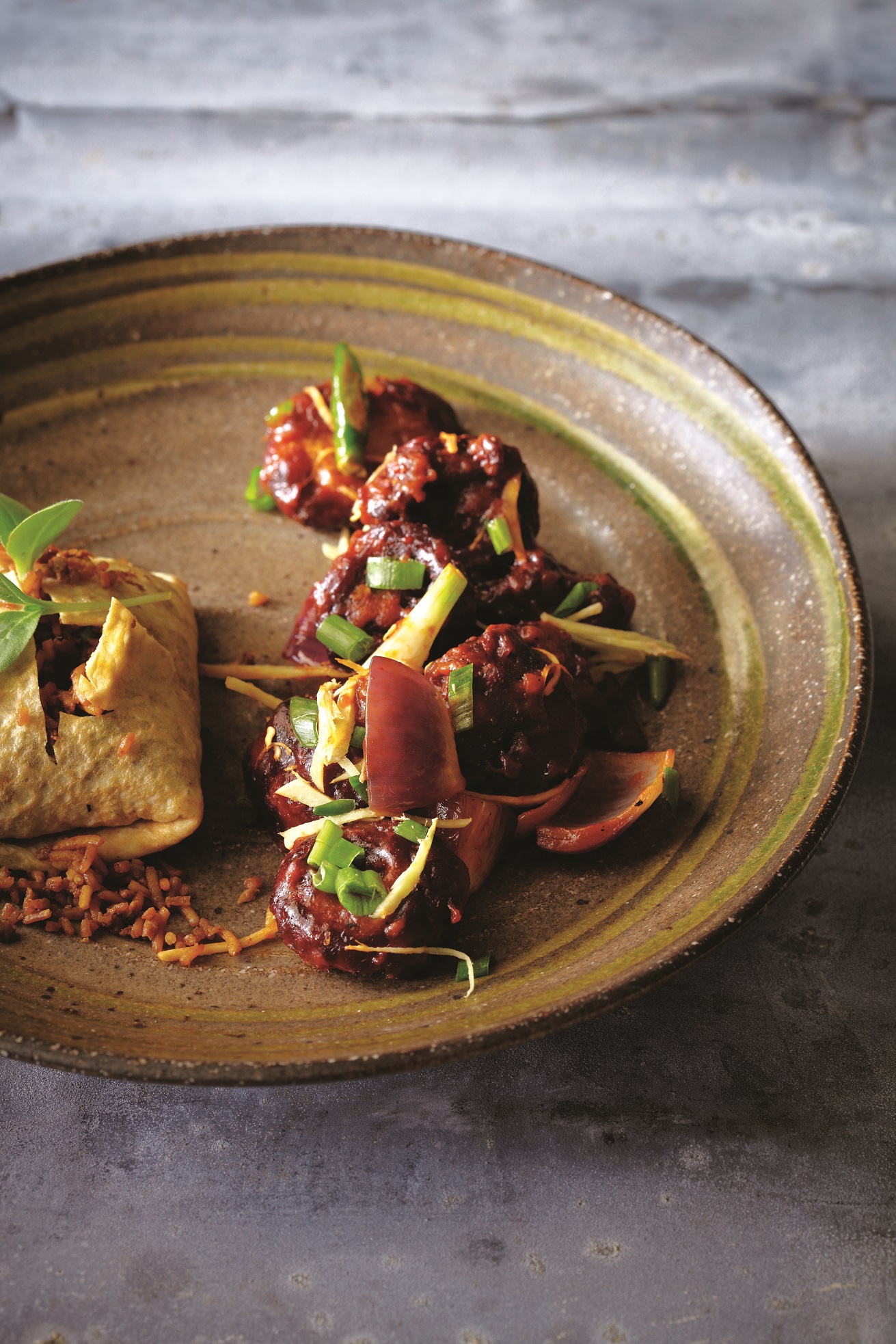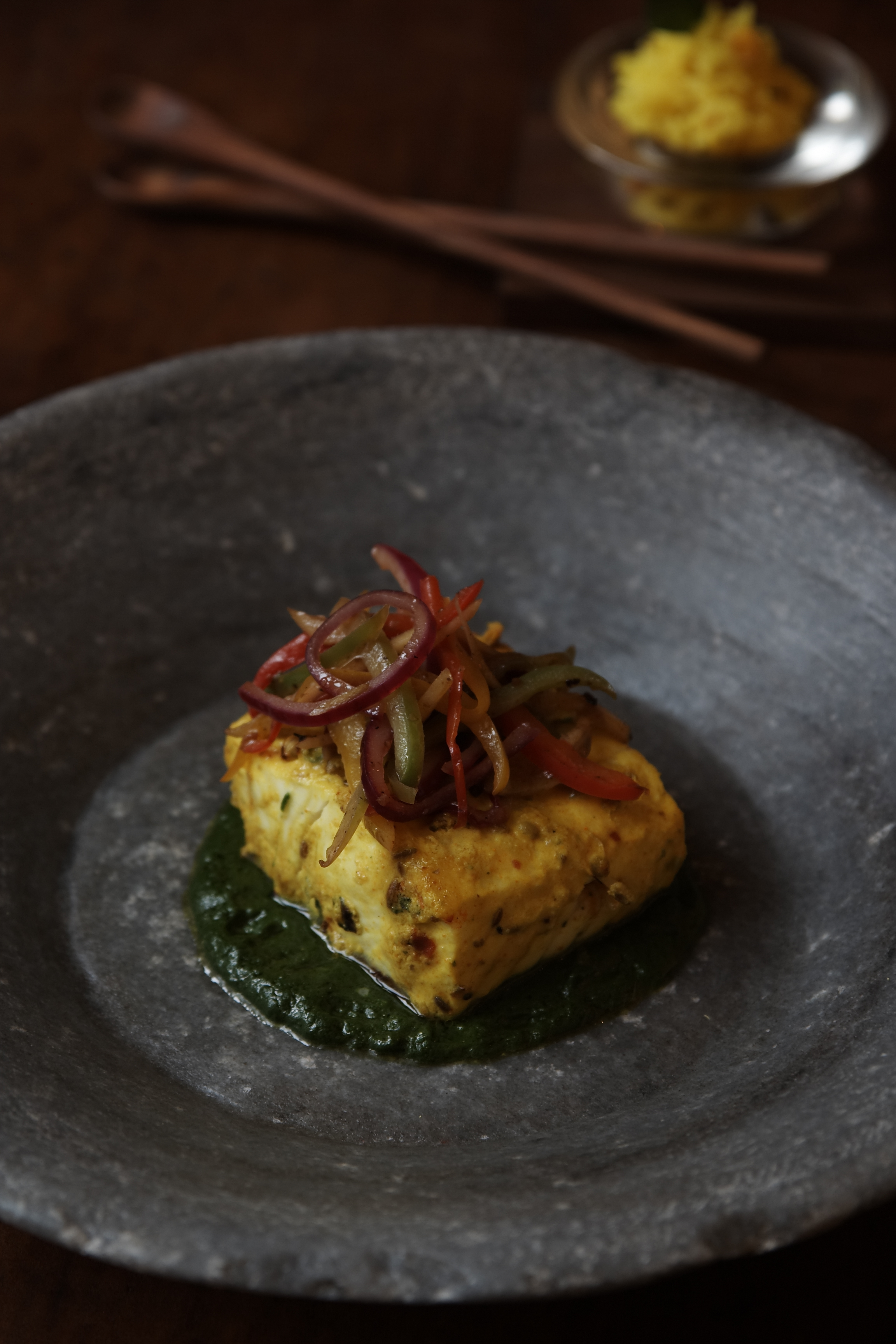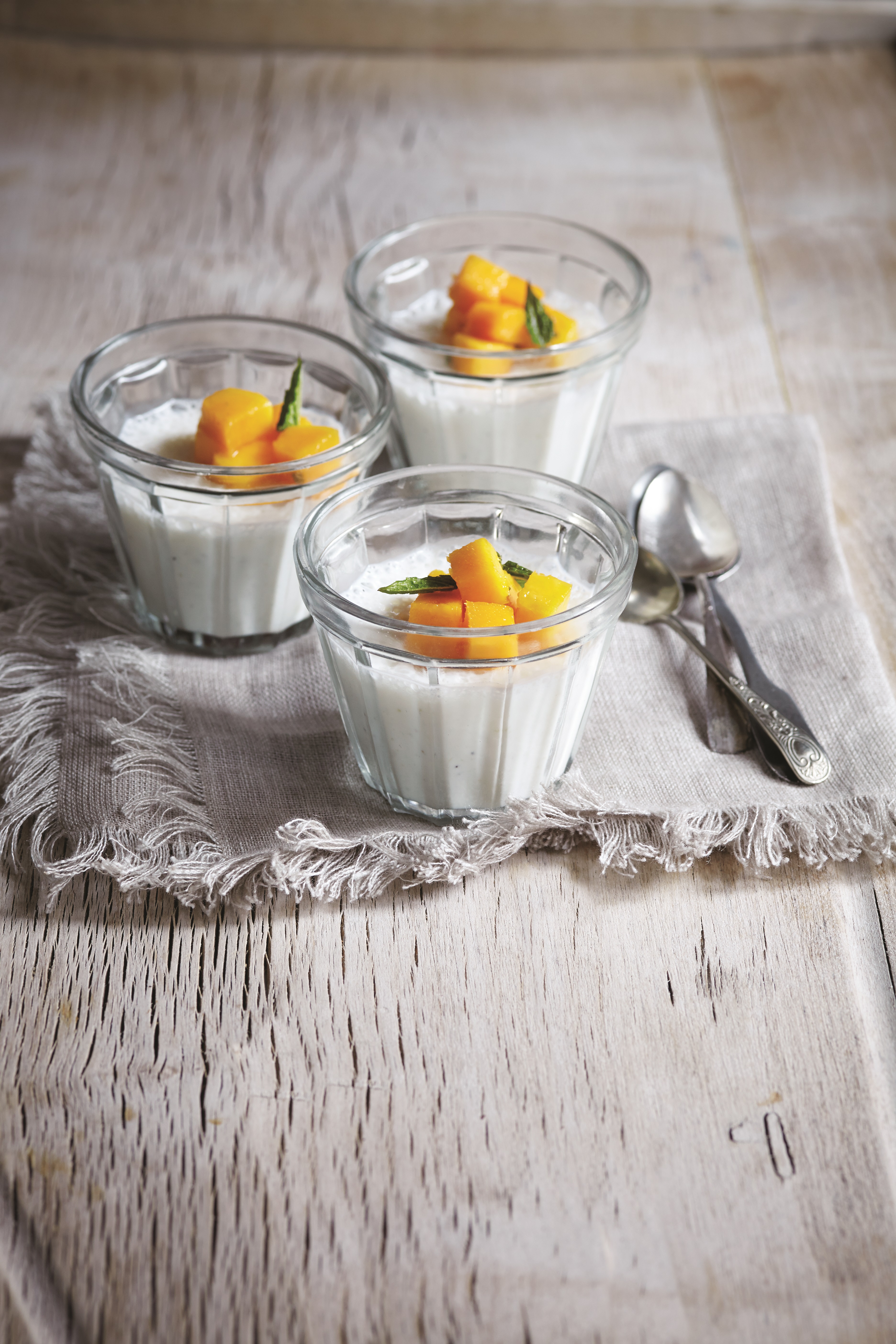November – Firecracker Chicken Wings
These chicken wings are an easy recipe to prepare in advance, and then simply fry before serving. You can use the entire wing if you like, but these are best with just the wing drumsticks (the piece of wing from the shoulder joint to the next). It gets a little messy to eat the whole wings with fingers, but the drumsticks work just fine to eat standing up and with fingers. Feel free to leave the skin on as it becomes crisp when fried.
Serves 4-6
Ingredients
- 900g chicken wings, skin on
- vegetable oil, for deep frying
For the marinade
- 2 teaspoons Garlic paste
- 1½ teaspoons salt
- 1½ teaspoons red chilli powder
- 1 teaspoon sugar
- 4 tablespoons malt vinegar
- ½ teaspoon black peppercorns, coarsely crushed
- 1 teaspoon sichuan pepper, (optional)
- 1 green chilli, finely chopped
- 1 tablespoon freshly chopped coriander, plus extra for garnishing
- 50g rice flour
- 100g cornflour
For the dipping sauce
- 1 tablespoon vegetable or corn oil
- ½ star anise
- 1 banana shallot, finely chopped
- 50g pineapple, diced into 5mm cubes
- 5mm fresh ginger, finely chopped
- 5 tablespoons tomato ketchup
- 1 teaspoon soy sauce
- 1 teaspoon sugar
- ½ lime, juiced
For the green chilli mayo
- 4 green chillies, chopped
- 20g coriander, finely chopped
- 120ml vegetable oil
- 1 egg yolk
- 1 teaspoon mustard
- A pinch salt
- 1 lemon, juiced
Method:
Mix together all the ingredients for the marinade except the rice flour and cornflour and rub the mixture over the chicken wings. Place in the fridge to marinate for 4 hours (or if possible overnight).
In the meantime, make the dipping sauce. Heat the oil in a pan, add the star anise and stir for 30 seconds, then add the shallot and sweat over a high heat for 2–3 minutes, stirring continuously. Add the pineapple and continue cooking over a high heat for another 2 minutes until the pineapple is caramelised at the edges and is beginning to soften. Reduce the heat, add the ginger, tomato ketchup, soy sauce, sugar and 120ml of water and bring to the boil. Cook for 1 minute or two until the sauce turns glossy, check the seasoning and remove from the heat. Add the lime juice, cool and set aside.
To make the green chilli mayo, blend the chillies and coriander with the oil in a blender until fine. Whisk together the egg yolk and mustard, then make an emulsion by adding the blended chilli-coriander oil a little at a time, until all the oil is used. Season with salt and lemon juice and set aside.
When the chicken has been marinated, drain the excess liquid that has come out of the chicken. Mix together the rice flour and cornflour, then dredge the chicken wings in the flour a few at a time, so the chicken wings are dry.
Heat the oil to 180ºC and fry the chicken for 6–7 minutes in small batches until cooked through and crisp. Take care not to crowd the oil with too many wings at the same time as the coating comes off and the wings won’t be as crisp.
Drain on kitchen paper for 5 minutes, then sprinkle over a little chopped coriander. Serve accompanied with the dipping sauce and the green chilli mayo.

